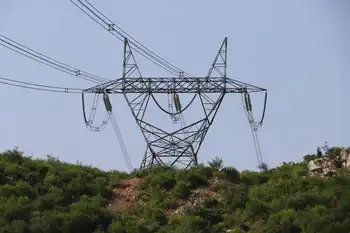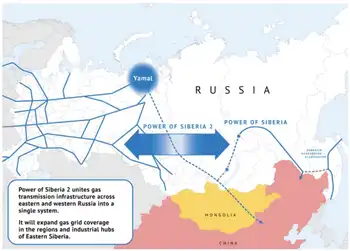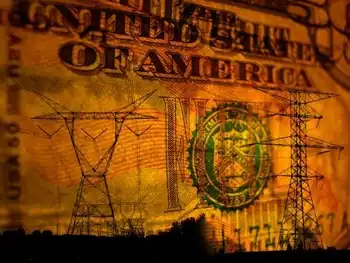Use energy, get rich and save the planet
By New York Times
Protective Relay Training - Basic
Our customized live online or in‑person group training can be delivered to your staff at your location.

- Live Online
- 12 hours Instructor-led
- Group Training Available
Their equation was I
PAT, which means that environmental Impact is equal to Population multiplied by Affluence multiplied by Technology. Protecting the planet seemed to require fewer people, less wealth and simpler technology — the same sort of social transformation and energy revolution that will be advocated at many Earth Day rallies.
But among researchers who analyze environmental data, a lot has changed since the 1970s. With the benefit of their hindsight and improved equations, IÂ’ll make a couple of predictions:
1. There will be no green revolution in energy or anything else. No leader or law or treaty will radically change the energy sources for people and industries in the United States or other countries. No recession or depression will make a lasting change in consumers’ passions to use energy, make money and buy new technology — and that, believe it or not, is good news, because.…
2. The richer everyone gets, the greener the planet will be in the long run.
I realize this second prediction seems hard to believe when you consider the carbon being dumped into the atmosphere today by Americans, and the projections for increasing emissions from India and China as they get richer.
Those projections make it easy to assume that affluence and technology inflict more harm on the environment. But while pollution can increase when a country starts industrializing, as people get wealthier they can afford cleaner water and air. They start using sources of energy that are less carbon-intensive — and not just because they’re worried about global warming. The process of “decarbonization” started long before Al Gore was born.
The old wealth-is-bad IPAT theory may have made intuitive sense, but it didn’t jibe with the data that has been analyzed since that first Earth Day. By the 1990s, researchers realized that graphs of environmental impact didn’t produce a simple upward-sloping line as countries got richer. The line more often rose, flattened out and then reversed so that it sloped downward, forming the shape of a dome or an inverted U — what’s called a Kuznets curve.
In dozens of studies, researchers identified Kuznets curves for a variety of environmental problems. There are exceptions to the trend, especially in countries with inept governments and poor systems of property rights, but in general, richer is eventually greener. As incomes go up, people often focus first on cleaning up their drinking water, and then later on air pollutants like sulfur dioxide.
As their wealth grows, people consume more energy, but they move to more efficient and cleaner sources — from wood to coal and oil, and then to natural gas and nuclear power, progressively emitting less carbon per unit of energy. This global decarbonization trend has been proceeding at a remarkably steady rate since 1850, according to Jesse Ausubel of Rockefeller University and Paul Waggoner of the Connecticut Agricultural Experiment Station.
“Once you have lots of high-rises filled with computers operating all the time, the energy delivered has to be very clean and compact,” said Mr. Ausubel, the director of the Program for the Human Environment at Rockefeller. “The long-term trend is toward natural gas and nuclear power, or conceivably solar power. If the energy system is left to its own devices, most of the carbon will be out of it by 2060 or 2070.”
But what about all the carbon dioxide being spewed out today by Americans commuting to McMansions? Well, itÂ’s true that American suburbanites do emit more greenhouse gases than most other people in the world (although New Yorkers arenÂ’t much different from other affluent urbanites).
But the United States and other Western countries seem to be near the top of a Kuznets curve for carbon emissions and ready to start the happy downward slope. The amount of carbon emitted by the average American has remained fairly flat for the past couple of decades, and per capita carbon emissions have started declining in some countries, like France. Some researchers estimate that the turning point might come when a countryÂ’s per capita income reaches $30,000, but it can vary widely, depending on what fuels are available.
Meanwhile, more carbon is being taken out of the atmosphere by the expanding forests in America and other affluent countries. Deforestation follows a Kuznets curve, too. In poor countries, forests are cleared to provide fuel and farmland, but as people gain wealth and better agricultural technology, the farm fields start reverting to forestland.
Of course, even if rich countriesÂ’ greenhouse impact declines, there will still be an increase in carbon emissions from China, India and other countries ascending the Kuznets curve. While that prospect has environmentalists lobbying for global restrictions on greenhouse gases, some economists fear that a global treaty could ultimately hurt the atmosphere by slowing economic growth, thereby lengthening the time it takes for poor countries to reach the turning point on the curve.
But then, is there much reason to think that countries at different stages of the Kuznets curve could even agree to enforce tough restrictions? The Kyoto treaty didnÂ’t transform EuropeÂ’s industries or consumers. While some American environmentalists hope that the combination of the economic crisis and a new president can start an era of energy austerity and green power, Mr. Ausubel says theyÂ’re hoping against history.
Over the past century, he says, nothing has drastically altered the long-term trends in the way Americans produce or use energy — not the Great Depression, not the world wars, not the energy crisis of the 1970s or the grand programs to produce alternative energy.
“Energy systems evolve with a particular logic, gradually, and they don’t suddenly morph into something different,” Mr. Ausubel says. That doesn’t make for a rousing speech on Earth Day. But in the long run, a Kuznets curve is more reliable than a revolution.











